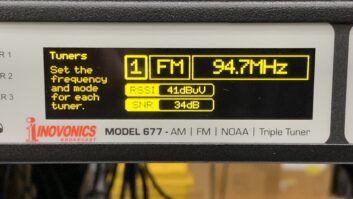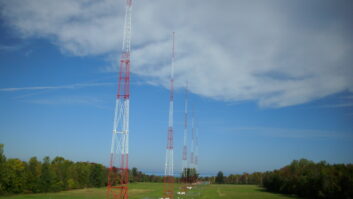
It is happening more and more, with property values going up: AM stations sharing transmitter sites with other stations for the benefit of both.
Case in point, Salem Media Group just combined two of its stations in the Twin Cities market of Minneapolis and St. Paul. Salem is a Christian programming-formatted network of 115 stations and has four signals in the Twin Cities.
The tower site for 1280 kHz WWTC was on the west side of the metro, combined with 1570 kHz KDIZ. Consulting engineer Carl T. “Tom” Jones of CT Jones in Springfield, Va., was hired for the project, and his study showed WWTC could increase from 5 kW day and night to 10 kW day and 15 kW night by moving to the south side of town.
Yes, that’s right — they could have more power at night than day. That helps overcome night interference!
THE SITE
Fig. 1 shows towers at the 980 kHz KKMS site in Eagan, a south suburb of the Twin Cities. It was a prime candidate for diplexing two AM signals. All four towers are now used for both stations. No new towers were added and no changes were made.
Tower lighting power is via Austin brand isolation/lighting transformers, commonly called Austin Rings. Lighting chokes can change tower impedance a bit. Ring transformers don’t have that problem.
All patterns point north-northeast. The study showed WWTC would lose a little coverage to the west, but would gain in high population areas. For perspective, most AM directional patterns in Minnesota point north with nulls to the east, south and west, protecting existing stations in the U.S.
This new site on the south side of the market makes a lot of sense.
TIGHT SCHEDULE
Steve Smit, Salem engineer in the Twin Cities, was a busy man during this project.
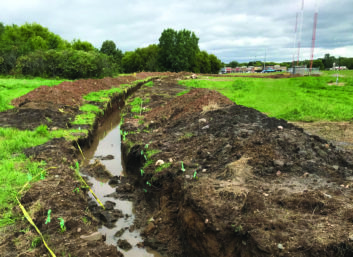
First, there was a year of planning. Construction started in late summer of 2018, when there were 95-degree Fahrenheit days in September, followed by 40-degree weather two weeks later. This is Minnesota!
Steve had to manage this new work while doing all the necessary engineer duties required to keep four stations running.
SLIP SLIDING
Trenches were dug to each of the four towers at a depth of 4-1/2 feet (See Fig. 2).
All was going well until 3 inches of rain drenched the site, causing trench bank cave-ins. The top layer of cushioning sand washed away in places. They had to dig to recover the transmission lines, sample lines, control lines and power cables by clearing away debris and rocks. Sand was then put in again before final trench closure. The soil is a mixture of clay, field stone and sand that was very greasy and slippery after the rain.
What a mess. But they got it done.
[Radio Ranger Rides Into the Sunset]
THE PHASOR
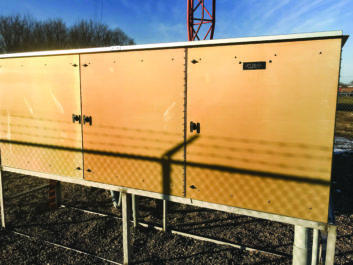
Kurt Gorman and crew at Phasetek Inc. of Quakertown, Pa., rebuilt a used phasor from Salem’s 1300 kHz KKOL in Seattle. They were also able to reuse some parts from other Salem network stations (see. Fig. 3).
The antenna coupling unit/filter cabinets were new, but again benefited from some used components inside. Concrete pads were poured at each of the four towers to support the 4 ft. x 3 ft. x 12 ft. cabinets containing antenna coupling networks and filters for the two stations. Fences had to be rebuilt to accommodate the change.
Fig. 4 shows the newly constructed antenna coupling network for KKMS. You will note there is no RF contactor to change from day to night patterns. That station has just one pattern with the same 5 kW power for day and night. That is very convenient!
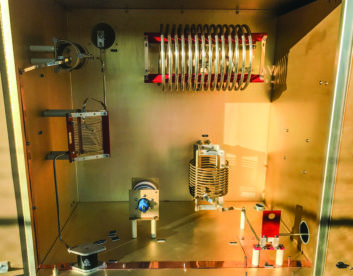
Fig. 5 is an antenna coupling network for WWTC. The center bay, of each 12-foot cabinet, is a combining network, which is seen in Fig. 6. All nicely done.
THE BUILDING
The station was built in the 1960s for one AM with the possibility of an FM in the future. All equipment was on the main level. No thought was given to expanding.
Fortunately, there is a basement, as is the custom in almost all Minnesota buildings. The basement area was rebuilt to accommodate two transmitters and the WWTC phasor system. Wiring had to be bored through cast concrete walls, and air conditioning was installed.

THE TRANSMITTERS
A used Harris 3DX50 transmitter was brought in from KKOL in Seattle, then tuned to run on 1280 kHz at 10 kW day and 15 kW night. It is loafing along in this application. (Interestingly, Steve had helped install that transmitter back in 2005, when he worked in Seattle.)
This transmitter was built to run on 480 volt three-phase power, so new electrical service was added. The list of items to be completed went on and on.
Fig. 7 shows Steve Smit checking the WWTC common point impedance on the newly rebuilt and operational phasor. To his back is a Nautel ND-5 backup transmitter from WWTC’s original transmitter site. There is also an equipment rack and the Harris 3DX50.
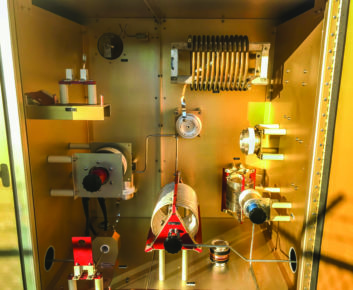
The KKMS transmitter and phasor room remained the same. In Fig. 8, Steve is checking readings at the phasor, with two Gates 5 transmitters as alternate mains. This is a good arrangement with two equally-capable transmitters that substitute for each other on a regular basis.
MOM
RF Method of Moment proofs were performed several years ago by Tom Jones and this time were proofed by Kurt Gorman.
MOMs, as you know, avoid frequent monitor point measurements on the pattern for KKMS, along with day and night monitor point readings at WWTC. Of particular importance were monitor points on the somewhat restrictive WWTC night pattern. They had to be read during the day, resulting in some listener complaints.

Kurt Gorman filed the FCC paperwork. Approval was granted in early January 2019.
The stations are 100-percent operational, and the staff is happy to have this project completed. The timing was good. Temperatures dropped to 30 degrees below zero (the actual temperature!) for several days later in January. You wouldn’t want to work on an AM under those conditions!
PROGRAMMING
The station’s programming is not all automated or from a bird. About 25% of aired material is locally produced for the four Salem stations in the Twin Cities. They find it is important to be connected with listeners, via live talk, in the market.

FROM THREE TO TWO
KDIZ, the 1570 KHz non-directional station, moved from the west site, to KYCR’s three-tower transmitter location in Golden Valley, Minn, in March 2019. (Salem owns that one too.)
This was just one more combining project for Steve Smit.
Michael Patton of Michael Patton & Associates in Baton Rouge, La., was hired to retune the 3DX50 transmitter for WWTC, as well as a Nautel ND-5 transmitter for KDIZ.
In the end, Salem consolidated three transmitter sites down to just two, each with two stations. The studios are all at the KKMS/WWTC site, where Steve’s office is. Very convenient!
Comment on this or any article. Write to [email protected]. We’re always looking for good facility project stories to share.
Mark Persons, WØMH, is a Certified Professional Broadcast Engineer and has more than 40 years’ experience. His website is www.mwpersons.com.







